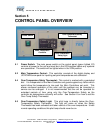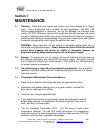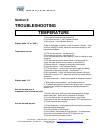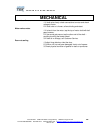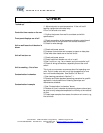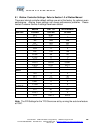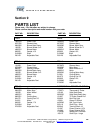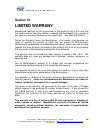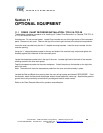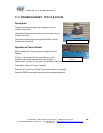
F O R C E D A I R O V E N M A N U A L
Cascade TEK 5245-A NE Elam Young Parkway Hilllsboro Oregon 97124
Toll Free 888-835-9250 503-648-1818 FAX 503-648-1798 info@cascadetek.com www.cascadetek.com
REV 01.08
15
Indicated chamber temperature
unstable
1/ ±0.1 may be normal.
2/ Is fan working? –verify movement of air in chamber.
3/ Is ambient room temperature radically changing – either door
opening or room airflow from heaters or air conditioning ? –
stabilize ambient conditions.
4/ This may happen if exhaust stack is 100% open or if power
exhaust is cycling – adjust stack to at least ¼ closed.
5/ Sensor miss-located, damaged or wires may be damaged -
check mounts for control and OTP sensors, then trace wires or
tubing between sensors and controls.
6/ Calibration sensitivity – call Customer Service.
7/ High limit set too low – check if OTP light is on continuously;
turn controller knob completely clockwise to see if problem
solved then follow instructions in section 6.4 for correct setting.
8/ Electrical noise – remove nearby sources of RFI including
motors, arcing relays or radio transmitters
9/ Bad connection on temperature sensor or faulty sensor –
check connectors for continuity and mechanical soundness while
watching display for erratic behavior; check sensor and wiring for
mechanical damage.
10/ Bad connections or faulty solid state relay – check
connectors for mechanical soundness and look for corrosion
around terminals or signs of arcing or other visible deterioration.
11/ If set point is below 60 degrees, temperature can be
unstable. See unit specifications for individual ranges.
Display and reference
thermometer don’t match
1/ Calibration error – See Controller Manual
2/ Temperature sensor failure
3/ Controller failure
4/ Allow at least two hours to stabilize.
5/ Verify that reference thermometer is certified.
Can't adjust set points or
calibration
1/ Turn entire unit off and on to reset.
Calibrated at one temperature,
but not at another
This can be a normal condition when operating temperature
varies widely. For maximum accuracy, calibration should be
done at or as close to the set point temperature.




